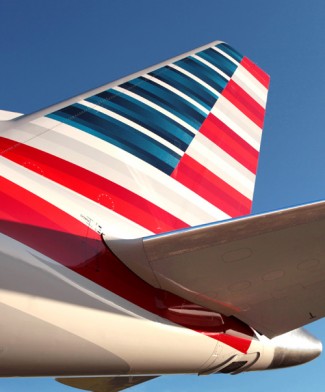The Whitlow Letter
The exception applies only to the scheduling of flight time. It is inapplicable to, and does not excuse, a violation of a rest requirement. Pilots are required to look back after every arrival and find at least an 8-hour rest period within the previous 24 hours. Given these statements by Whitlow, let's apply this to our operations using the example below. You are on your first day of RSVB. Your on-call time commences at 1500Z or 1100 local domicile time. It is important to remember, when trying to understand the Whitlow interpretation, that the beginning of an on-call reserve period ends your rest, even though you are not on duty at the airport. At 1530Z, scheduling calls you with the following assignment:
The above pairing is scheduled for 7:14 block. On the second flight segment, 0271 BHM-SDF, you encountered weather in SDF that resulted in a 53 minute delay. Your block for this segment was now 1:57. You are now blocked at 8:06 for the entire duty period. Can you continue with flight 0688? Yes, if it operates as scheduled. This means that since you were legal to start, you are legal to finish. You can legally complete the segment 0688 as scheduled. What if you are called enroute to ONT and asked to stop in DEN for additional volume?
Can you continue DEN-ONT? The answer is no. You must now calculate the block time you have already completed, SDF-BHM, BHM-SDF and SDF-DEN and then add the scheduled block DEN-ONT. If this exceeds 8 hours, you cannot continue. What if you have to divert for weather in ONT and land in MHR? Can you continue to ONT? The answer is yes. Again, the legal to start, legal to finish rule applies. You were originally scheduled for under 8 hours of block, and due to circumstances beyond anyone s control, you made an additional stop. You can continue to ONT. Now we have to apply the rest factor that Whitlow addresses to these scenarios. When you arrive in SDF from the second segment, you are notified that the outbound segment, 0688 SDF-ONT, will be 2 hours late. Can you accept this? Your original duty day was 12:38, so an additional 2 hours will increase this to 14:38. That fits within the allowable duty extension limit of 15:00 per the contract, but now we must apply the look-back for rest idea that Whitlow identified. Your on-call RSVB duty period started at 1500Z. If we arrive in ONT and are off duty at 0731Z, can we look back over the past 24 hours and find 8 hours of rest? No, because if we look back from 0731Z on WE to 0731Z on TU, we find only a 7:29 rest in that 24 hour period. An RSVB crewmember who started duty at 1500Z must be in rest by 0700Z in order to provide 8 hours of rest within a 24 hour timeframe. Conversely, an RSVA crewmember, who started on-call duty at 0300Z, must be in rest by 1900Z in the duty period he is called out to fly in order to provide 8 hours of rest from duty within a 24 hour timeframe. In the above scenario, the crew cannot accept the assignment. What if there was no prior knowledge of the delay? What if while loading, the load crew has trouble with a can and has maintenance working a problem? This delays your departure time by 1 hour and 50 minutes. Can you accept this and still continue to ONT? You were scheduled within the legal limit. The answer is no. This would only provide a 7:39 rest within the past 24 hours. The crew cannot accept the flight. The crew cannot block out. Additionally, if the block out had occurred prior to 1:50 and a delay on the taxi was encountered, they must return to the blocks. They cannot be planned to arrive past 0645Z at a destination, thereby placing them in rest by 0700Z. The Whitlow interpretation goes so far as to have the crew make an additional calculation at the point of takeoff by adding to the known takeoff time, the expected airborne time plus the expected taxi in time at destination. The following questions that relate to the above scenario were presented to Whitlow by the APA, with his response following each.
Question: If a ground delay continues to the point that the look-back rest period is reduced to less than eight hours, can the crew continue?
Whitlow: The flight may not take off if the look-back rest period is reduced to less than 8 hours. There must be at least an eight-hour look-back rest period. The eight-hour minimum reduced rest may not be further reduced under any circumstances. Question: If a ground delay would not provide at least eight hours of look-back rest, can the crew depart legally based upon the published scheduled flight time?
Whitlow: No...the actual expected flight time must be used in determining the look-back rest period. This means that a weather delay on the ground must now use the actual routing rather than the originally scheduled flight time. Diversions for weather must be accounted for and the crew s schedule must be adjusted accordingly. If you are now flight planned south over ABQ to ONT due to thunderstorms over DEN, the new flight plan and its anticipated time of arrival must be used for calculating the look-back. The original scheduled flight time cannot be used.
Question: If there is a known ground stop for the destination of the final segment, which would result in look-back rest of only 7 hours and 45 minutes, can the crew legally leave the gate? If they are off the gate when the ground stop
occurs, can they continue?
Whitlow: If it is known...that arrival based upon the actual expected flight time will not result in at least 8 hours of look-back rest, then the flight may not leave the gate. If the flight is away from the gate, but is not yet in the air, then the flight may not take off. To this explanation, Whitlow added, If the ground stop at the destination airport does not become known until after the flight is in the air, the FAA will not, as a matter of enforcement policy, take...action against the flight crewmember or the certificate holder for a violation of the regulations, provided the ground stop at the destination airport is an unforeseen delay...and the full, required minimum reduced rest and the compensatory rest are given at the completion of the flight segment.
Because the legality of a flight schedule is a joint responsibility between dispatch and the crew, knowledge of this rule and its application(s) is imperative. Any change to a schedule that would result in a violation of this regulation should be immediately relayed to the crew for action. And, as always, remember your contractual protection, written on the first page of Article 13 in the Agreement, giving you the right to ask for, in writing, a letter from management ordering you to proceed in the event of an FAR dispute: Conflicts between a crewmember and the Company in interpreting any Federal Aviation Regulations will be attempted to be immediately resolved. If unresolved, however, the crewmember will request that a member of the Company s management put in writing to him the order to proceed with the disputed activity. FAR 121.471 refers to domestic operations. This does not include Mexico and Canada. These areas are designated as domestic for contractual purposes, not for FAR legality. Pasted below is a copy of this regulation for further reference.
PART 121 OPERATING REQUIREMENTS: DOMESTIC, FLAG, AND SUPPLEMENTAL OPERATIONS Table of Contents
Subpart Q Flight Time Limitations
and Rest Requirements: Domestic
Operations
Sec. 121.471 Flight time limitations and
rest requirements: All flight crewmembers.
(a) No certificate holder conducting
domestic operations may schedule any
flight crewmember & no flight crewmember
may accept an assignment for flight
time in scheduled air transportation or in
other commercial flying if that crewmember s
total flight time in all commercial
flying will exceed
(1) 1,000 hours in any calendar year;
(2) 100 hours in any calendar month;
(3) 30 hours in any 7 consecutive days;
(4) 8 hours between required rest periods.
(b) Except as provided in paragraph (c) of
this section, no certificate holder conducting
domestic operations may schedule
a flight crewmember and no flight
crewmember may accept an assignment
for flight time during the 24 consecutive
hours preceding the scheduled completion
of any flight segment without a
scheduled rest period during that 24 hours
of at least the following:
(1) 9 consecutive hours of rest for less
than 8 hours of scheduled flight time.
(2) 10 consecutive hours of rest for 8 or
more but less than 9 hours of scheduled
flight time.
(3) 11 consecutive hours of rest for 9 or
more hours of scheduled flight time.
(c) A certificate holder may schedule a
flight crewmember for less than the rest
required in paragraph (b) of this section
or may reduce a scheduled rest under the
following conditions:
(1) A rest required under paragraph
(b)(1) of this section may be scheduled
for or reduced to a minimum of 8 hours
if the flight crewmember is given a rest
period of at least 10 hours that must
begin no later than 24 hours after the
commencement of the reduced rest period.
(2) A rest required under paragraph
(b)(2) of this section may be scheduled
for or reduced to a minimum of 8 hours
if the flight crewmember is given a rest
period of at least 11 hours that must
begin no later than 24 hours after the
commencement of the reduced rest period.
(3) A rest required under paragraph
(b)(3) of this section may be scheduled
for or reduced to a minimum of 9 hours
if the flight crewmember is given a rest
period of at least 12 hours that must
begin no later than 24 hours after the
commencement of the reduced rest period.
(4) No certificate holder may assign,
nor may any flight crewmember perform
any flight time with the certificate
holder unless the flight crewmember
has had at least the minimum rest
required under this paragraph.
(d) Each certificate holder conducting
domestic operations shall relieve each
flight crewmember engaged in scheduled
air transportation from all further duty for
at least 24 consecutive hours during any 7
consecutive days.
(e) No certificate holder conducting
domestic operations may assign any flight
crewmember & no flight crewmember
may accept assignment to any duty with
the air carrier during any required rest
period.
(f) Time spent in transportation, not local
in character, that a certificate holder
requires of a flight crewmember and provides
to transport the crewmember to an
airport at which he is to serve on a
flight as a crewmember, or from an airport
at which he was relieved from duty
to return to his home station, is not considered
part of a rest period.
(g) A flight crewmember is not considered
to be scheduled for flight time in
excess of flight time limitations if the
flights to which he is assigned are scheduled
and normally terminate within the
limitations, but due to circumstances
beyond the control of the certificate holder
(such as adverse weather conditions),
are not at the time of departure expected
to reach their destination within the
scheduled time.
Hopefully, this makes a rather vague and confusing issue a little clearer. Please contact [email protected] with any questions concerning this article, or to relay ideas for future articles. A special thanks to Rick Krausse who helped me in compiling this article.
-

Hawaiian Airlines 05/02/2024
-

Wheels Up Private Jet LLC 05/02/2024
-

Envoy Air 04/30/2024
-

Delta Air Lines 04/23/2024
-

United Parcel Service 04/23/2024
 AIRLINE PILOT CENTRAL
AIRLINE PILOT CENTRAL